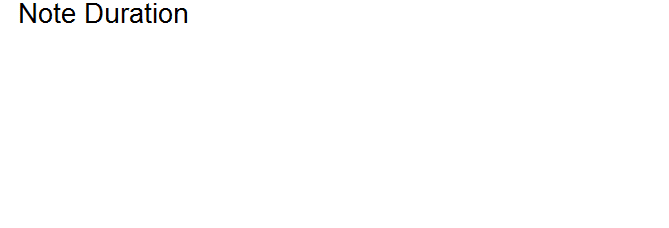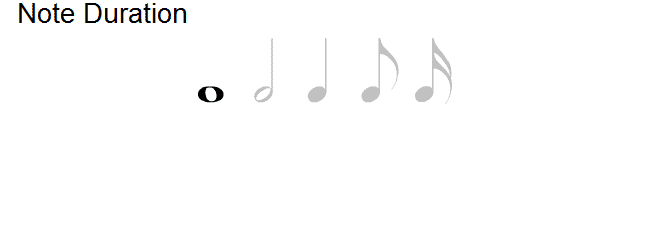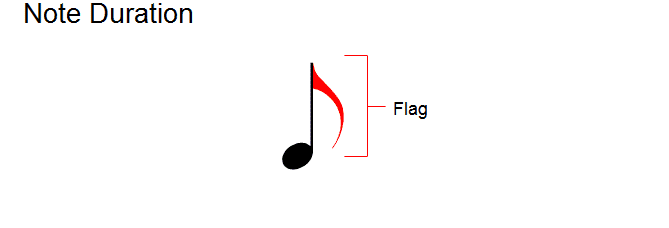The length of time that a note is played is called its note duration, which is determined by the type of note.

The whole note has the longest note duration in modern music.
(In the UK it's called a semibreve)

The half note has half the duration of a whole note.
(In the UK it's called a minim)

Two half notes occupy the same amount of time as one whole note.

The quarter note is a fourth (or a quarter) of a whole note.
(In the UK it's called a crotchet)

Four quarter notes occupy the same amount of time as one whole note.
Two quarter notes equal the duration of a half note.

Notes smaller in duration than a quarter note have flags. Each flag halves the value of a note.

An eighth note has one flag. Therefore, two eighth notes occupy the same amount of time as one quarter note.
(In the UK an eighth note is called a quaver)

A sixteenth note has two flags, halving the value again.
(In the UK a sixteenth note is called a semiquaver)

Two sixteenth notes equal the duration of an eighth note.
Four sixteenth notes occupy the same amount of time as one quarter note.

Although it is possible to have notes with three or more flags, they are seldomly used.
This chart displays the relationship of all five note types discussed in this lesson.












